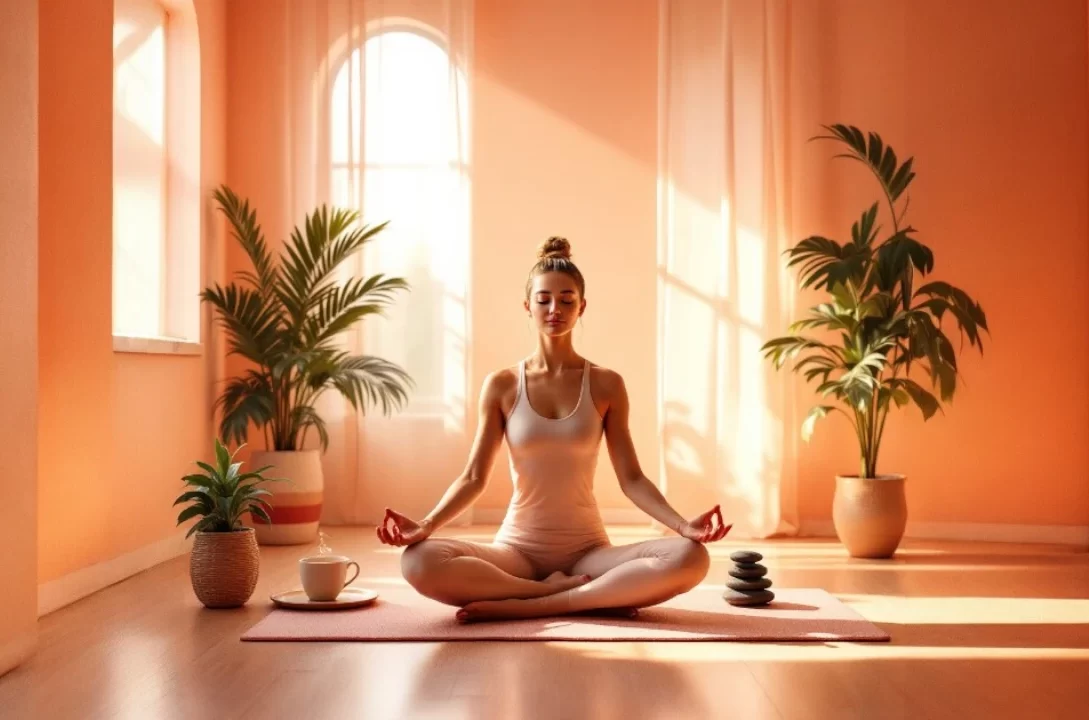Yoga isn’t just about twisting your body into impressive poses—it’s a transformative practice that nurtures your mind, body, and soul. For thousands of years, yoga has helped people achieve physical strength, mental clarity, and emotional balance.
Whether you’re a beginner or an experienced practitioner, yoga offers profound benefits that extend far beyond the mat. In this guide, we’ll explore how yoga enhances holistic health, promotes inner peace, and helps you live a more balanced and fulfilling life.
The Physical Benefits of Yoga: Strength, Flexibility, and Beyond
Yoga is a full-body workout that improves strength, flexibility, and endurance without the strain of high-impact exercises. Here’s how it transforms your physical health:
- Enhances Flexibility: Regular practice loosens tight muscles, increases joint mobility, and prevents injuries.
- Builds Strength: Poses like Plank, Chaturanga, and Warrior sequences engage multiple muscle groups.
- Boosts Circulation & Heart Health: Flowing sequences (Vinyasa) improve blood flow and cardiovascular function.
- Supports Weight Management: Active styles like Power Yoga and Ashtanga burn calories while building lean muscle.
- Improves Posture & Alignment: Yoga corrects imbalances caused by sitting for long hours.
Mental and Emotional Benefits: Stress Relief and Clarity
One of yoga’s greatest gifts is its ability to calm the mind and reduce stress. Scientific studies confirm that yoga:
- Lowers Cortisol Levels: Deep breathing and mindful movement reduce stress hormones.
- Enhances Focus & Memory: Meditation and breathwork (Pranayama) sharpen cognitive function.
- Reduces Anxiety & Depression: Yoga stimulates the parasympathetic nervous system, promoting relaxation.
- Encourages Mindfulness: Staying present in each pose trains the brain to let go of distractions.
Yoga for Inner Peace: Connecting Mind, Body, and Spirit
Yoga is a powerful tool for self-discovery and spiritual growth. Through consistent practice, you can:
- Cultivate Self-Awareness: Tuning into your body’s signals fosters intuition and emotional balance.
- Release Negative Energy: Twists and hip-opening poses help release stored tension and trauma.
- Develop Gratitude & Compassion: Many yogic philosophies (like the Yamas and Niyamas) teach kindness and mindfulness.
- Deepen Meditation Practice: Yoga prepares the body for longer, more focused meditation sessions.
Different Yoga Styles for Different Needs
Not all yoga is the same. Depending on your goals, you can choose from these popular styles:
Hatha Yoga
- Best for Beginners
- Slow-paced, focusing on basic postures and breathing.
Vinyasa Yoga
- Dynamic & Flowing
- Synchronizes movement with breath for a cardiovascular boost.
Yin Yoga
- Deep Stretching & Relaxation
- Targets connective tissues with long-held passive poses.
Kundalini Yoga
- Spiritual & Energetic
- Combines chanting, breathwork, and movement to awaken inner energy.
Restorative Yoga
- Ultimate Relaxation
- Uses props (bolsters, blankets) to support the body in gentle, healing poses.
How to Start a Yoga Practice: Tips for Beginners
New to yoga? Follow these steps to build a sustainable practice:
- Start Slow: Begin with 10-15 minute sessions and gradually increase duration.
- Use Online Resources: Follow YouTube tutorials or apps for guided sessions.
- Invest in a Good Mat: A non-slip mat ensures stability and comfort.
- Listen to Your Body: Avoid pushing into pain—modify poses as needed.
- Set a Routine: Consistency matters more than intensity.
Breathwork (Pranayama): The Secret to Deeper Yoga Benefits
Breath is the foundation of yoga. These Pranayama techniques enhance your practice:
- Ujjayi Breath (Ocean Breath): Calms the mind in Vinyasa flows.
- Nadi Shodhana (Alternate Nostril Breathing): Balances energy and reduces anxiety.
- Kapalabhati (Skull-Shining Breath): Energizes and detoxifies.
Common Myths About Yoga Debunked
- “You Need to Be Flexible to Do Yoga” → Yoga improves flexibility—you don’t need it to start!
- “Yoga Is Only for Women” → Men benefit greatly from yoga (ask pro athletes and Navy SEALs!).
- “Yoga Is Just Exercise” → It’s a holistic lifestyle encompassing mental and spiritual growth.
FAQs About Yoga for Holistic Health
1. How often should I practice yoga for the best results?
Even 2-3 sessions per week can yield noticeable benefits. Daily practice is ideal for deeper transformation.
2. Can yoga help with back pain?
Yes! Poses like Cat-Cow, Child’s Pose, and Cobra strengthen the spine and relieve tension.
3. Do I need special equipment?
Just a mat—blocks and straps are helpful but optional.
4. Is yoga a good workout for weight loss?
Active styles like Power Yoga and Ashtanga burn calories, but yoga’s stress-reducing effects also prevent emotional eating.
5. Can yoga replace meditation?
While yoga includes meditative elements, dedicated meditation deepens mental clarity further.
Conclusion: Embrace Yoga for a Healthier, Happier Life
Yoga is more than a workout—it’s a path to holistic well-being. Whether you seek physical strength, mental calm, or spiritual growth, yoga offers profound, lasting benefits.
Start today. Roll out your mat, take a deep breath, and discover how yoga can transform your life—one pose at a time.
Useful Links (Authoritative Sources):
- Harvard Medical School: Yoga for Anxiety and Stress
- National Institutes of Health (NIH) on Yoga’s Health Benefits
By integrating yoga into your routine, you’ll unlock greater vitality, peace, and joy—proving that true wellness begins from within. 🧘♂️✨











